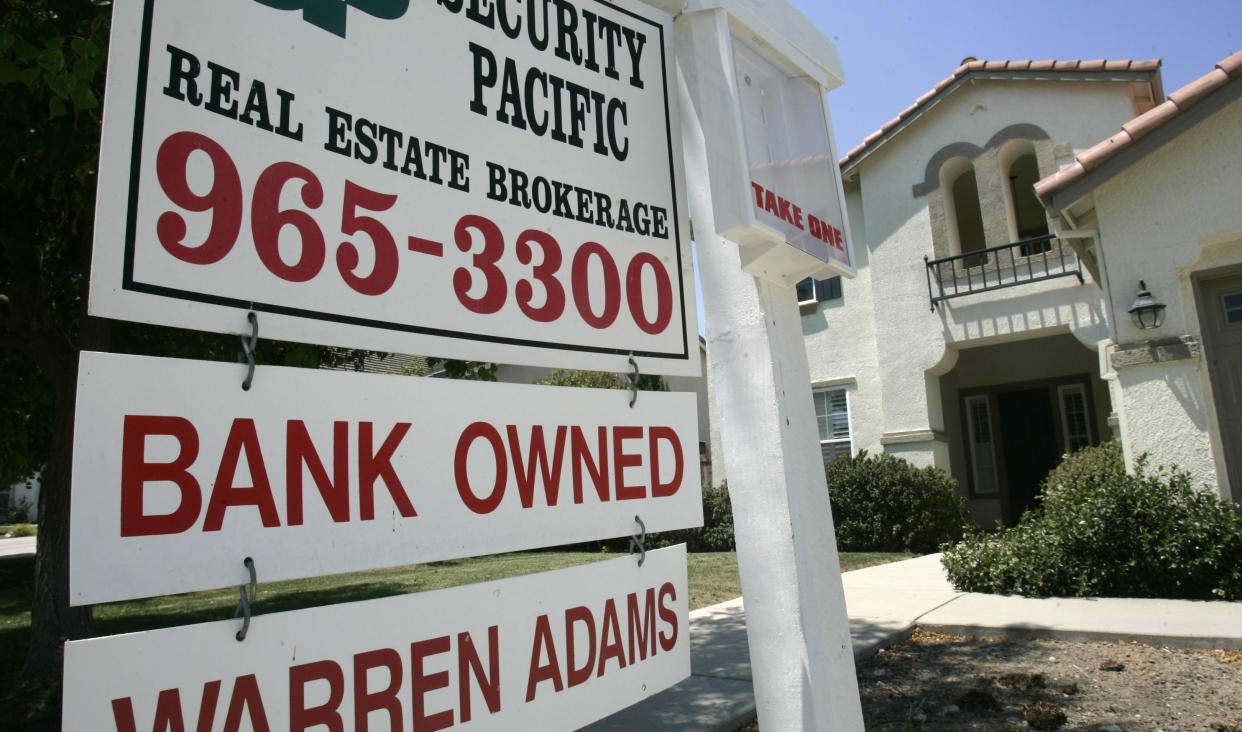Bank of America analysts see 'turbulence' but no housing crash like in 2008
Bank of America economists are nixing concerns about a housing crash like the one experienced in 2008. Instead, they say, the market is more reminiscent of four decades ago.
Unlike in 2008, there’s no evidence of overdevelopment from builders or over-leveraging by homebuyers and owners. The housing market today is largely dealing with the fallout from tight monetary policy — similar to 1980.
There are some key differences, though, but the main takeaway from Bank of America is that there’s still a rough road ahead for housing.
"Looking back at previous housing recessions, we think the 1980s are a better analogy for today’s market than the 2008 housing crash," Jeseo Park and Michael Gapen, US economists at Bank of America Securities, wrote in a note. Still, "with rates likely staying higher for longer, we are cautious of potential turbulence ahead."
It’s not 2008
In the years before 2008, builders were on a building binge, leading to "excess development," they wrote. While homebuilding has ramped up over the past year, it lags — by far — the pace developers logged from 2000 to 2006.
Home loans were also easier to get in the years leading up to 2008 with looser standards as the norm. Lenders didn’t check income, made loans to risky borrowers, and allowed purchases with no money down. They also peddled adjustable-rate mortgages that later ballooned balances and had no cap on rate increases.
Purchasers now face higher standards — and did even during the go-go homebuying years of the pandemic. That’s a major difference, the economists pointed out.
"Household mortgage debt was 65% of disposable income in 2Q 23, compared to a peak of 100% at the start of the financial crisis," they wrote. "The ratio of mortgage debt to real estate assets (i.e., loan-to-value) was 27% in 2Q 2023, significantly lower than 2010."
More of a 1980s feel
Instead, the economists argue, the housing market resembles the early 1980s in several key ways. Back then, inflation was also running high. In the years leading up to 1980, the consumer price index, or CPI — a closely watched inflation gauge — jumped to 14.8% on an annual basis.
To combat rising prices, the Federal Reserve raised interest rates, which consequently doubled mortgage rates from about 9% to 18% by 1981, hurting the housing market just as baby boomers entered their prime homebuying years.
Sound familiar?
Fast forward to June 2022 when inflation reached its highest level in more than four decades with the CPI increasing 9.1% year over year. The Fed, recognizing that inflation was a growing problem even before that, had started its rate-hiking campaign that March.
Read more: What the Fed rate-hike pause means for bank accounts, CDs, loans, and credit cards
Like in the early 1980s, the Fed’s actions indirectly affected mortgage rates, with the rate of the 30-year fixed mortgage rate more than doubling from 3% in January 2022 to 7.49% this month. The impact has hit yet another large generation entering their homebuying years: Millennials.
"While to a degree home sales can be supported by activity from this prime age group, persistently high mortgage rates should make the decision of purchasing a home more challenging in the near term," they wrote. "Indeed, favorable demographics were not enough to hold up the market in the 1980s and will likely not be enough to stimulate the market this time around."
Other housing indicators then and now are also similar.
For instance, home prices surged over 16% in 1979, then flatlined as year-over-year growth slowed to just 0.5% by 1982. Existing home sales dropped 54% from peak to trough, revealing how much demand fell off.
Similarly, home prices climbed nearly 21%, before flattening to 0% yearly growth basis in June of this year. Existing home sales have plunged nearly 40%.
Still, there’s a noticeable difference between now and then when it comes to leverage.
Read more: First-time homebuyer in 2023: What you need to know

Mortgage debt to disposable personal income hit 65% in the second quarter of this year compared with a peak ratio of 45% in 1980.
"At first blush this difference may seem concerning, but one explanation is that the speed of home price growth has exceeded income growth over the years," the economists wrote. "Household balance sheets are in very good shape at the moment, and leverage does not appear to be a major concern."
Looking ahead, Bank of America expects limited housing inventory, high prices, and labor shortages to be headwinds for some time. Affordability continues to be a problem as home price growth still is exceeding income growth. In 2022, the median sales price of new single-family homes was over five times the median household income, according to the Bank of America note.
"We remain cautious of potential turbulence ahead," the researchers noted. Only a cut in rates can improve affordability and create a "stable and healthy housing market."
Bank of America analysts expect the Fed to raise rates by a quarter-point in November and are predicting a rate cut of the same magnitude in June of next year, according to a company spokesperson. By year-end 2024, they expect rates will be down by three-quarters of a point and then down another full point in 2025.
"Until then, hang tight," the researchers wrote about the housing market. "It may be a bumpy ride."
Dani Romero is a reporter for Yahoo Finance. Follow her on Twitter @daniromerotv.
